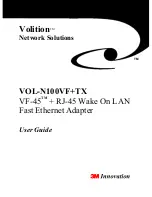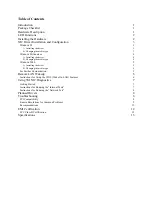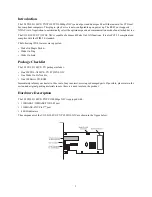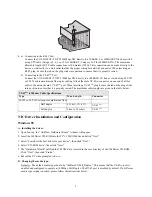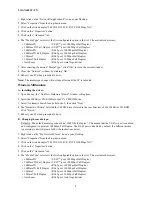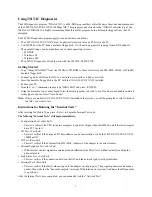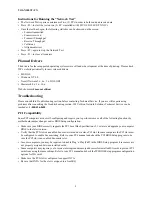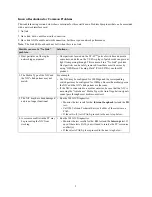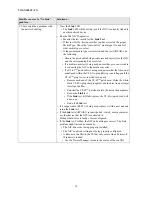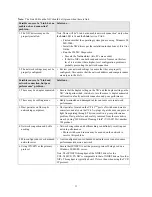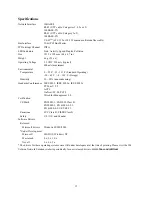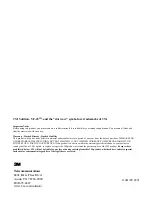
7
Using 3M NIC Diagnostics
The 3M Diagnostics program, “DIAG.EXE”, is a MS-DOS program that verifies the basic functions and components
of the 3M VOL-TX PCI 100Mbps NIC. This program can be found in the “\DIAGS” subdirectory of the
3M Driver CD-ROM. It is highly recommended that this useful program be run before placing a call into the 3M
Helpdesk.
The 3M NIC Diagnostics program must be run under these conditions:
• The 3M VOL-TX NIC must be physically inserted into any PCI slot in the PC
• You MUST boot the PC from a bootable floppy disk. It will not run properly if running from a DOS window.
• The bootable floppy can be made from any of these operating systems:
• MS-DOS
• Windows 98
• Windows ME
• The 3M NIC Diagnostics will only work with the 3M VOL-N100VF NIC.
Getting Started
• Copy “\Diags\DIAG.EXE” from the 3M Driver CD-ROM to the root directory of a MS-DOS, Win98, or WinME
bootable floppy disk.
• Connect a patch cable from the NIC to a network device, such as a hub or a switch.
• Insert the bootable floppy disk in the PC with the VOL-TX NIC installed.
• Reboot your PC.
• From the “A:\>” command prompt, type “DIAG.EXE” and press <ENTER>.
• Using the arrow keys on your keyboard, select the media type that you wish to use. If you have any doubts on which
media type to choose, select “Auto Sense.”
Note:
If there are multiple VOL-TX NICs installed in the system, you will be prompted to select which of
the NICs you want to test.
Instructions for Running the “Internal Tests”
After selecting the Media Type, press <Enter> to begin the Internal Test suite.
The following “Internal Tests” will begin immediately:
• Configuration Test: (Pass/Fail)
• This test verifies if the CPU in the test computer is equal to or higher than Intel 80386, and if the test computer
has a PCI bus in it.
• I/O Test: (Pass/Fail)
• This test verifies if the assigned I/O base address can be successfully used by the 3M VOL-TX PCI
100Mbps NIC.
• ID Test: (Pass/Fail)
• This test verifies if the Ethernet Node ID (MAC Address) of the adapter is in correct format.
• Internal Loopback Test: (Pass/Fail)
• With this test, the test signals are intercepted and reflected at the MAC level without actually reaching the
physical media.
• Link Status Test: (Pass/Fail)
• This test verifies if the connection between the NIC and the network is physically established.
• Interrupt Test: (Pass/Fail)
• This test verifies if the IRQ value assigned to the adapter works properly. The program generates and sends a
packet, then waits for the “transmit complete” interrupt. If the interrupt is received, it indicates the IRQ number
is a good one.
After the Internal Tests have completed, you can manually start the “Network Test”:

